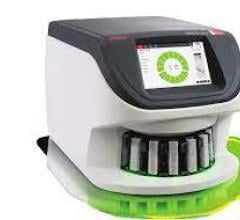
Getty Images
Teleradiology is grabbing significant eyeballs, given the tremendous potential it exhibits in revolutionizing cancer diagnostics. As digital technologies advance, imaging techniques have improved significantly, enabling oncologists to offer more precise diagnosis and prescribe timely treatment. The International Agency for Research on Cancer estimates that in 2020 there were nearly 19.3 million new cancer cases, and almost 10 million fatalities. Hence, disbursing timely diagnosis is become very important, prompting enhanced uptake of teleradiology.
ESOMAR-certified market research firm Future Market Insights projects the global teleradiology market to expand astronomically, experiencing a compound annual growth rate (CAGR) of over 20 percent until the first half of the current decade, being valued at over $13 billion. As key technological advancements such as cloud computing, additive manufacturing and artificial intelligence (AI) become more pronounced, prolific developments are anticipated to be on the cards. The following four key trends are popularizing teleradiology in medical diagnosis, with highly lucrative gains expected to be accrued in forthcoming years.
1. The Problem of Overworked Radiologists
In an era of increasing consumerization of healthcare, patients’ expectations for customized care delivery are mounting on a daily basis. This has been fueled by growing complexity of cases and shortage of adequate resources. Consequently, physical fatigue arising out of putting in extra work hours to enhance efficiency is inclining. Hence, frequent episodes of radiologist burnout experiences are rising significantly.
A Medscape survey in 2019 revealed that 44 percent of physicians reported feeling burned out, while 11 percent were colloquially depressed and 4 percent of them clinically depressed. Furthermore, the study revealed that in 2018 critical care (48 percent), neurology (48 percent), family medicine (47 percent), obstetricians/gynecologists (46 percent) and internal medicine (46 percent) represented the most burned out specialties. Of the more than 15,000 U.S. physicians, roughly 600 respondents worked as radiologists.
The survey also discovered that almost 25 percent of depressed physicians acknowledged that they might be less careful while assessing patients, which could elevate the risks of a wrongful diagnosis. To combat this escalating fatigue rate, teleradiology is an effective approach. Remote interpretation of patient images from medical imaging methodologies, such as magnetic resonance imaging (MRI), computed tomography (CT) scans and X-rays eliminates the need for doctors to be in the same place as the patient. Additionally, these techniques help prioritize cases so as to address the most critical ones, thus streamlining workflow.
2. Dearth of Skilled Medical Professionals
Contemporary radiology practices are faced with the ever-increasing burden of supply shortages as far as the availability of skilled medical professionals is concerned. According to the Association of American Medical Colleges (AAMC) published in 2019, the United States is expected to experience a shortage of nearly 122,000 physicians by 2032.
Experts largely posit a reduction in funding for residency programs and capitalization of new equipment having a domino effect in the form of increased overworked radiologists’ retirement rates as they are unable to cope with the increasing incidences of age-related comorbidities. Hence, total radiologist output has been declining substantially in recent years.
Likewise, the Royal College of Radiologists reported that England registered a 35 percent short-staffing rate, and that the local healthcare system requires over 1,600 full-time consultants to keep up with safe staffing quotas. It further cautioned that without adequate improvements, workforce would increase only by 571 consultants in the next four years. Moreover, the U.K. is expected to register a retirement rate of 22 percent of the workforce in the next few years.
Factoring in the aforementioned trends, teleradiology adoption is finding increased scope for the years to come. Recently, in February 2021, global provider of AI-enabled teleradiology technology software Telerad Tech announced its plans to further expand its business across four additional countries: Saudi Arabia, Egypt, South Africa and Israel respectively. This development is highly likely to stimulate teleradiology adoption and offset any shortage of radiologists by streamlining workflow procedures and enabling remote diagnostics, thus alleviating the burden of immense workloads.
3. Major Tailwinds Received Amid COVID-19 Pandemic
With the novel coronavirus bringing the entire world down on its knees, the global healthcare fraternity faced an unprecedented challenge. Exponentially rising infection rates exerted tremendous pressure on existing infrastructure, with hospitals facing acute equipment shortage. Furthermore, postponement of elective surgical procedures led to a significant decline of in-house treatment for chronic conditions.
With strict calls for social distancing, the idea of telemedicine acquired immense importance. With respect to COVID-19 infection rate determination, telemedicine played a pivotal role in swiftly reporting active cases to seek timely treatment. In India, teleradiology has especially proven highly effective to ensure equitable care disbursement throughout the pandemic crisis, given the disproportionate number of radiologists across metros and relative under-representation in tier-2 cities and remote parts.
For instance, remote X-rays to detect the presence of SARS-CoV-2 amongst patients were increasingly performed from community health centers across the state of Tripura in Northeastern India. 5C Network, a start-up funded by Unitus Ventures, raised a fund of $579,461 in 2019, and has been working to optimize its teleradiology services with the low radiologist to patient ratio of 1:100,000. Incorporation of AI has helped calculate the CT Severity Score, prompting more efficient and accurate estimation.
Likewise, the U.S Federal Government sanctioned the Centers for Medicare and Medicaid Services (CMS) to broaden access to Medicare telehealth services, enabling beneficiaries to receive a wider range of services from their doctors without having to travel to a healthcare facility. The regulation helped enhance patient care and reduced the influx of COVID-19 patients. A temporary relaxation mandate has been provided to bypass mandatory in-state licensing requirements for radiologists allowing cross-state reading with teleradiology.
4. Say Hello to 3-D Report Viewing
A major breakthrough expected in the teleradiology domain is the advent of 3-D report viewing. As deployment and utilization of sophisticated CT and MRI 3-D imaging services increases, so does data complexity and consequently, the need to incorporate efficient assimilation solutions to streamline workflow. A key obstacle faced by physicians is storing patient data, which often involves copious amounts of paperwork.
Many players, such as Telradsol, are offering highly specialized 3-D report viewing services. In collaboration with the Massachusetts General Hospital (MGH), it offers 3-D post-processing services using a global model of delivery to efficiently provide after-hours services. For entities such as aortic or cerebral aneurysm or vascular occlusion, 3-D image post-processing can add significant value. Facilitating accurate diagnosis, treatment and subsequent follow-up can improve patient care and clinical outcomes.

Abizer Shaikhmahmud is a content writer who works closely with the healthcare and pharmaceutical team among other domains at Future Market Insights (FMI). With sound research skills and his own style of writing thought leadership articles, Shaikhmahmud extensively covers key happenings in the aforementioned domains. The insights presented here are based on a report on the Teleradiology Market by FMI.
Related Teleradiology Content:
BLOG: Exa Gateway Offers a New Way to Deliver Teleradiology


 May 02, 2024
May 02, 2024 








